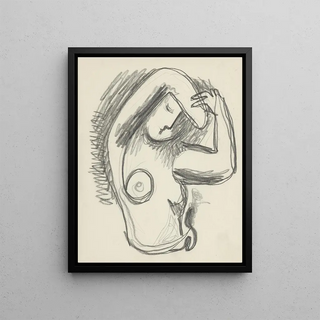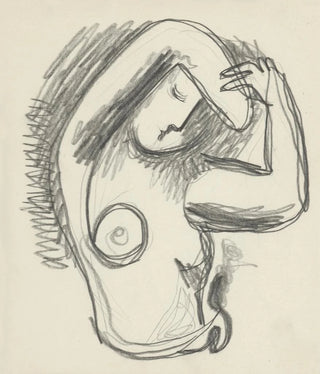Art print | Act - Mikuláš Galanda


View from behind

Frame (optional)
Mikuláš Galanda’s "Acte" art print stands as a true testament to the artistic evolution of the 20th century. In this piece, the Slovak artist manages to capture the very essence of the human condition through a bold and introspective representation. The nuances of color, organic shapes, and flowing lines intertwine to create an atmosphere that is both unsettling and captivating. This work, at the crossroads between abstraction and figuration, invites the viewer to immerse themselves in a universe where emotion and reflection coexist. Galanda, through his unique approach, transcends the simple act of painting to offer a genuine sensory experience.
Style and uniqueness of the art print
Galanda’s style is characterized by a constant search for harmony between the body and the mind. In "Acte", he explores themes of sensuality and spirituality, infusing a singular dynamic into his work. The voluptuous curves and delicate postures of the human figures evoke a timeless dance, where each movement seems charged with meaning. The color palette, both rich and subtle, plays a crucial role in expressing emotions. Warm tones blend with deeper shadows, creating a striking contrast that draws the eye and stimulates the imagination. This chromatic choice, far from being trivial, allows Galanda to create an immersive atmosphere where the viewer is invited to feel rather than merely observe.
The artist and his influence
Mikuláš Galanda, an emblematic figure of Slovak art, established himself as a pioneer within the modernist movement. Born in a time marked by social and political upheavals, he developed a style that reflects both his cultural roots and his desire for innovation. Galanda was influenced by various artistic currents, ranging from surrealism to expressionism, which enabled him to forge a unique artistic identity. His work not only marked his era but continues to inspire many contemporary artists seeking to explore the limits of representation. By revisiting universal themes of the human condition, Galanda

Matte finish

View from behind

Frame (optional)
Mikuláš Galanda’s "Acte" art print stands as a true testament to the artistic evolution of the 20th century. In this piece, the Slovak artist manages to capture the very essence of the human condition through a bold and introspective representation. The nuances of color, organic shapes, and flowing lines intertwine to create an atmosphere that is both unsettling and captivating. This work, at the crossroads between abstraction and figuration, invites the viewer to immerse themselves in a universe where emotion and reflection coexist. Galanda, through his unique approach, transcends the simple act of painting to offer a genuine sensory experience.
Style and uniqueness of the art print
Galanda’s style is characterized by a constant search for harmony between the body and the mind. In "Acte", he explores themes of sensuality and spirituality, infusing a singular dynamic into his work. The voluptuous curves and delicate postures of the human figures evoke a timeless dance, where each movement seems charged with meaning. The color palette, both rich and subtle, plays a crucial role in expressing emotions. Warm tones blend with deeper shadows, creating a striking contrast that draws the eye and stimulates the imagination. This chromatic choice, far from being trivial, allows Galanda to create an immersive atmosphere where the viewer is invited to feel rather than merely observe.
The artist and his influence
Mikuláš Galanda, an emblematic figure of Slovak art, established himself as a pioneer within the modernist movement. Born in a time marked by social and political upheavals, he developed a style that reflects both his cultural roots and his desire for innovation. Galanda was influenced by various artistic currents, ranging from surrealism to expressionism, which enabled him to forge a unique artistic identity. His work not only marked his era but continues to inspire many contemporary artists seeking to explore the limits of representation. By revisiting universal themes of the human condition, Galanda






